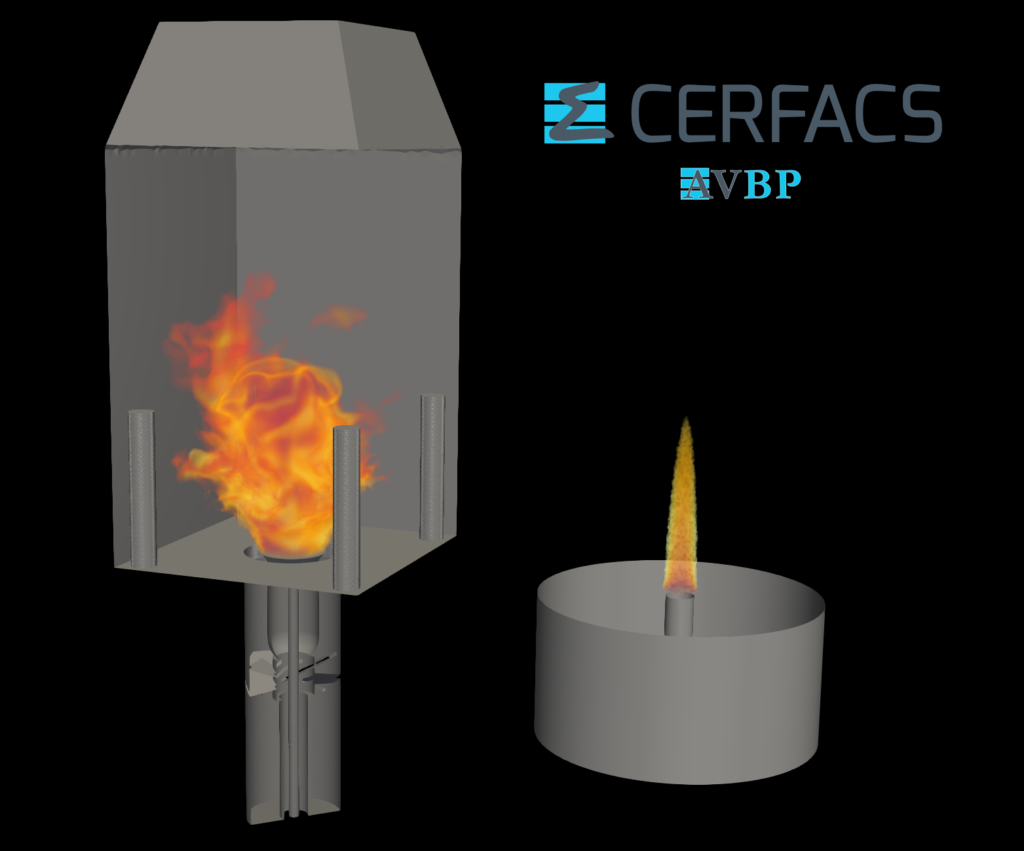🎓Alexandre COUDRAY thesis defense
Thursday 3 April 2025 at 14h00
JCA room, Cerfacs, Toulouse
Modeling and simulation of soot production in aeronautical engine conditions
ED MEGEP
https://youtube.com/live/Son4PqISdJc?feature=share

The certification of aeronautical engines to increasingly stringent soot emission standards require predictive models capable of handling complex industrial configurations at a reasonable computational cost. This thesis proposes an advanced soot simulation methodology by integrating Analytically Reduced Chemistry (ARC) with a detailed description of polycyclic aromatic hydrocarbons (PAHs) and the Lagrangian Soot Tracking (LST) model within the AVBP code.
The methodology is first validated on laminar flames from the International Sooting Flame (ISF) workshop, showing strong agreement with experimental measurements in terms of species and soot predictions. A detailed study on the Gülder laminar flame highlights the improved description of soot morphology with a new surface model based on aggregates, although discrepancies remain in soot volume fraction. Additionally, a soot maturity model is introduced to track the hydrogen-to- carbon ratio, a proxy for soot chemical composition.
To mitigate the computational cost associated with PAH inclusion, a hybrid model called PAHARC is developed. This model combines a compact reduced scheme for flame resolution with a tabulation approach for PAH access. The approach is applied to turbulent configurations, including the Cambridge burner and the 4SI aeronautical combustion chamber. Simulations show that the PAHARC model significantly reduces computational cost while maintaining satisfactory predictions. In the Cambridge burner, results indicate that LST overestimates the size of soot aggregates, although the particle size distribution remains consistent with experimental trends. Finally, soot modeling in the 4SI provides valuable insights into soot formation and evolution, despite the lack of experimental data for comparison.
In conclusion, this thesis establishes a robust framework for soot modeling in flames, with strong potential for turbulent cases. The proposed advancements pave the way for more accurate and cost-effective soot population predictions in AVBP, addressing certification challenges and emission reduction objectives.
Jury
| M. Jean-Christophe JOUHAUD | CERFACS | PhD supervisor |
| M. Jeroen VAN OIJEN | CORIA, Rouen | Reviewer |
| Mme Benedetta FRANZELLI | EM2C, Paris | Reviewer |
| M. Jérôme YON | INSA, Rouen | Examiner |
| M. Epaminondas MASTORAKOS | Cambridge UK | Examiner |
| Mme Bénédicte CUENOT | Safran Aircraft Engine | Invited member |
| Mme Eléonore RIBER | CERFACS | Invited member |
No content defined in the sidebar.

